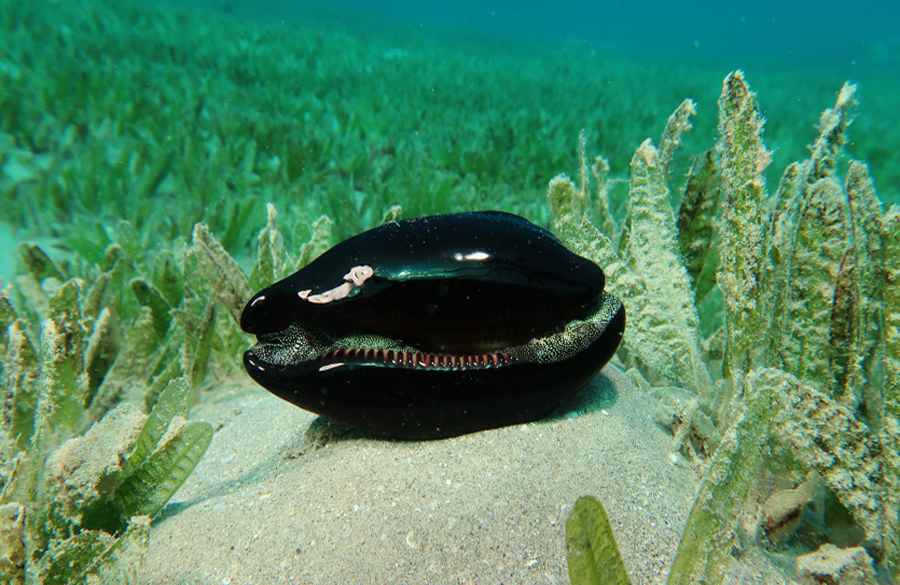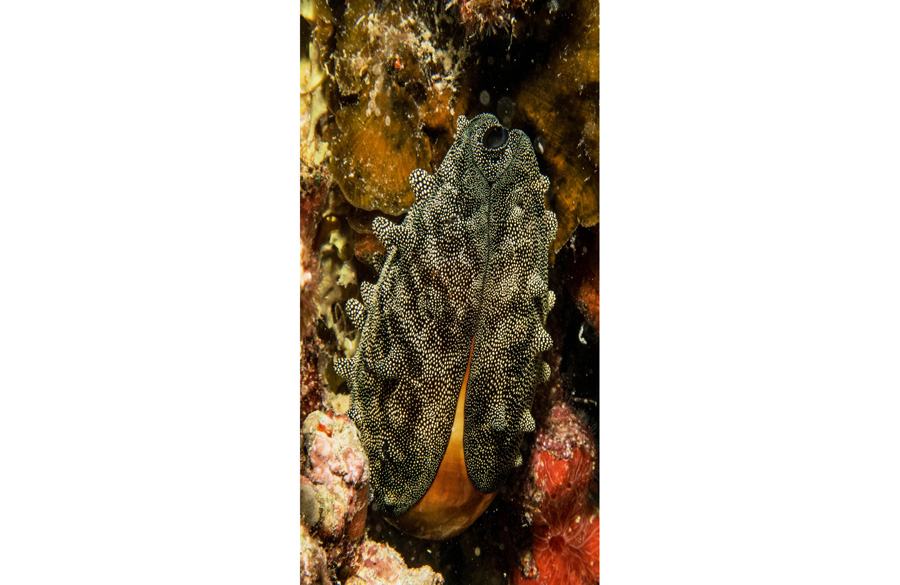The cowry snail is biologically, culturally, linguistically and economically a highly interesting species.

Talpa Talpa - 70mm
Shine, shape, colors and patterns have fascinated mankind for thousands of years. The scientific name is Cypraeidae. About 200 species are known and scientifically recorded. The cowry snail prefers warm water (over 18%), lives predominantly in shallow depths (from 3 to 200 meters). Native mainly in the Indopazifik, east coast of Africa, central-Pacific, Hawaii, Australia and red sea. The body consists on the one hand of the head, with two long feelers at the sides, each with one eye. Between the feelers is the breathing tube, with which the water is led to the gills and thus enables the absorption of oxygen.
Talpa Talpa - underside
On the other hand, there is the crawling foot and the mantle. The coat protects the organs heart, kidney, gills and stomach inside the casing.
On the outside, the coat completely covers the case and is retracted in case of danger.
The jacket protects the housing from being overgrown by other organisms and leads to the shiny surface. This is also the explanation why it is also called porcelain snail. Because of the nature of the shell, the term porcelain was adopted in the 13th century for high-quality tableware. Interesting and exciting is the breeding of the cowry snail.
Talpa Talpa with mantle
All Kauris have separate sexes. Anatomical peculiarities of the sexual organs and genetically controlled behavior lead to the fact that the female can mate with two males at the same time. The female then releases only as many fertilized eggs as she deems appropriate and retains the others to spawn at a later time.
That means a female produces offspring from two different fathers at the same time. After five to nine days of brood care the larvae are shed and after another 5 days the larvae have become so big that they have a firm shell. After a metamorphosis, young cowrie snails emerge after 2 to 3 months.
The name Kauri can be found in many languages with very different meanings. In the Chinese script, Kauri stands for the words money, buy, sell. In Malaysian customs and tax. In Hindi for small coin.
Likewise, the cowry snail influenced the cultural history of mankind. Found as an admixture in graves of the Arabic, Nordic and Roman culture.
Over the centuries the Kauri was a means of payment.
Especially in the South Seas, Africa East and South Asia. As a medium of exchange, the Kauri currency spread from the Indian Ocean to Africa in the 13th century. Around 1520 slaves in West Africa were traded with Kauri money. In Cameroon, 60 Kauris were the equivalent of one slave. In 1850, in Sudan, one Kauri was sold for a handful of beans, a bowl of drinking water or an onion.
Until today the Kauri is a popular piece of jewelry and is worn as a talisman.
Photos: Talpa Talpa cowrie shell from Johann Vifian/ Table Kauri as cultural objects from Cowrie's specialist book by Dr. Felix Lorenz
Sources: Cowries specialist book by Dr. Felix Lorenz and Wikipedia Cowrie shells




